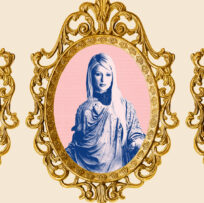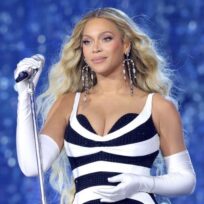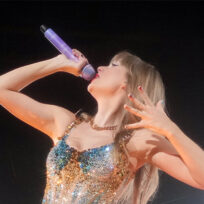As demonstrated by the most recent skinny jeans and side parts scandal that rocked millennials everywhere, tying ourselves to shared generational labels is a pillar of meme culture — or broadly, today’s culture. Generational stereotypes have fueled the formation of countless online communities, but they’ve also caused hot-blooded arguments across age lines. After Baby Boomers criticized Millennials for not buying houses, it sparked economic discourse around responsibility and capitalism, and the “OK Boomer” meme popularized during the 2020 election signified Gen Z refusing to feign respect for racist and misogynistic elders. To say the least, there is weight and substance behind these memed stereotypes.
As digital natives in a digital world, Gen Z’s cultural influence is undeniable, but the one stereotype that overpowers the rest is that we are “diverse.” A quick Google search will show you that Gen Z is labeled as the “most diverse generation in history” and that we “demand diversity in the workplace.” However, of the top 100 creators on the social media platform most commonly associated with Gen Z, TikTok, the vast majority are white or white-passing. Charli D’Amelio and Addison Rae, the golden girls of Gen Z, are thin, upper-middle-class white women. Simply put, it ain’t adding up: if we’re so diverse, why aren’t the people we idolize?
When Addison Rae appeared on The Tonight Show Starring Jimmy Fallon in March to perform multiple dances originally created by Black TikTokers, it sparked a conversation about white mediocrity. D’Amelio and Rae are certainly not as talented as Keara Wilson, who created the “Savage” dance that propelled Addison Rae to superstardom, or Jalaiah Harmon, the originator of the “Renegade” dance that did the same for Charli. But comparing talent isn’t the problem: these women took Black choreography and used it for their own benefit, and were rewarded. Whether it’s subconscious or not, the fame that we’ve given them is because they fit the mold of who women are supposed to want to be.
In the same way that millennials adore celebrities like Paris Hilton and Kim Kardashian, the supposedly diverse and inclusive Gen Z continues the cycle of rewarding attractive, rich, white women for existing. While society’s cultural icons have evolved from supermodels (1990s) to celebrities (2000s) to reality stars (2010s), the skin color and proximity to wealth of our superstars has remained consistent. Despite their wealthy, white California childhood, the Kardashians adopted Black culture to differentiate themselves from the thin blonde stars popular in the 2000s. They injected their butts and lips to recreate features found naturally on Black women, appropriated Black hairstyles, almost exclusively dated Black men, and recreated age-old Black and Latina fashion trends.
This look was, yes, a departure from parallel generational icons Paris Hilton and the Olsen Twins, but it wasn’t new. Black women, who grew up wearing wigs and had naturally big lips, certainly aren’t growing multimillion-follower fan bases or offered the cover of Vogue, but rather are discriminated against for living out their own culture while white women run through their trends faster than Fashion Nova can produce a rip-off.
The Kardashians shared everything from their petty fights to brutal divorces, parental blowups, and personal anxieties on national television. But the “relatability” or “reality” they may have shown on TV does not a billion-dollar empire make: they wouldn’t have had the lip kits, curvy shapewear, or half as much media coverage without appropriation.
TikTok was supposed to democratize the social media industry with an algorithm that let anyone get famous — or at least “TikTok famous.” Instead, we’ve repeated the same process of propping up white women who manipulate Black culture to appeal to the masses, yet remain safe from systemic racism in their peach skin. As the biggest Gen Z idols in the world, Addison Rae and Charli D’Amelio pocket millions while the Black girls who created the dances, and the music they dance to, remain nameless or endure hate at an alarmingly higher rate. Black creators’ followings remain significantly lower, and their sponsorship deals even sparser. Meanwhile, these white TikTok stars are hanging out with the Kardashians, with nary a Black woman in sight.
Would we still be idolizing these people, however, if corporations like NBC (the network that airs Jimmy Fallon’s show) and TikTok itself weren’t inching us in that direction? In March 2020, an internal memo was leaked revealing that TikTok’s algorithm doesn’t push darker, disabled, or “ugly” videos, making it significantly harder to “blow up” as a Black creator even if you have better content. Most of the companies giving out these sponsorship deals are run by majority-white Millennials or Baby Boomers who are inclined to stick with the already-advantaged white women that look like them or their children.
We won’t reach equality for these influencers until the most prominent corporations and influencers make a conscious effort to give Black creators the exposure their white counterparts get. Companies must do this through providing equally lucrative sponsorship opportunities, and the biggest celebrities must take responsibility for benefitting from the systems that allowed them to grow by offering slices of their fame to prop the culture originators up.
Gen Z definitely cares about diversity, but the systems in place created by previous generations don’t allow that to be reflected in our culture idols. If algorithms don’t allow Black creators to make it on their own, it’s up to influencers and social media users to make conscious choices to highlight and reward that talent, or we’ll be watching history repeat itself for the next generation, too.
Image: Todd Williamson / E! Entertainment








































